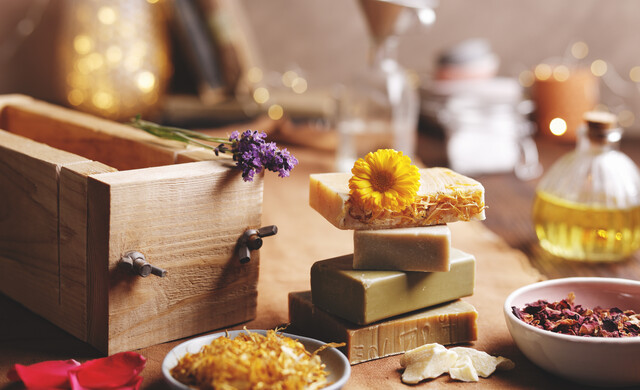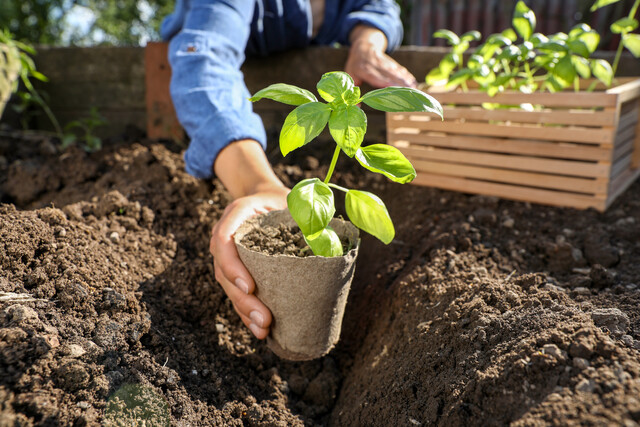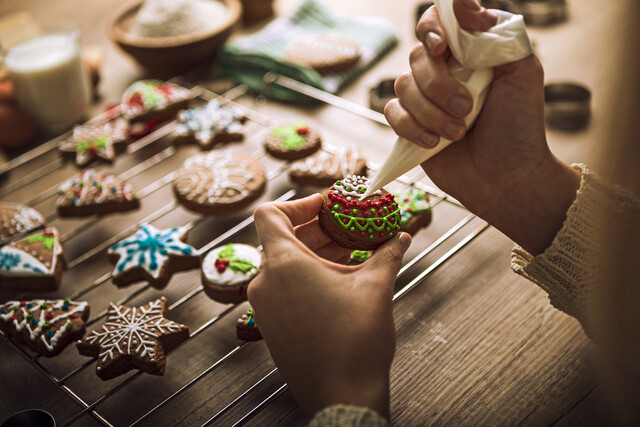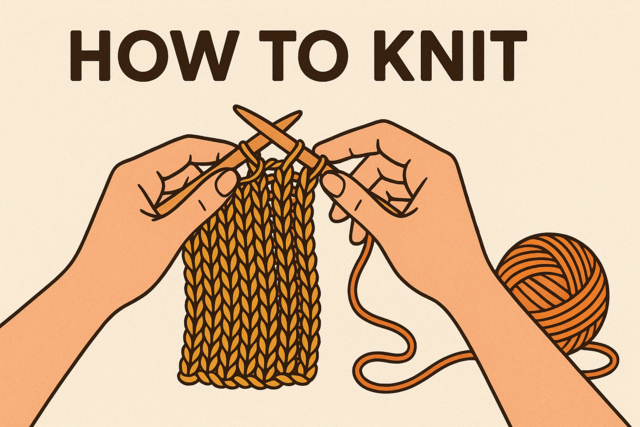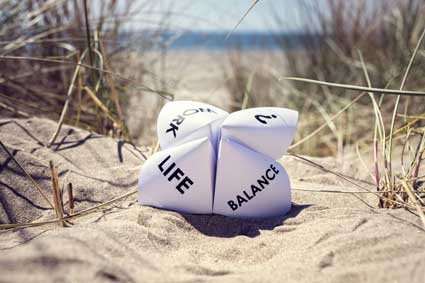Inspect your manicure kit for all the tools and supplies you'll need for your home manicure. Include a clean, folded hand towel to rest your hands on while manicuring.
Removing Polish and Nail Cleaning
Remove polish, wiping from the cuticle to tip using a cotton pad lightly doused in remover. The idea is to get as little remover on the cuticle as possible.
There's no getting around the nasty polish remover smell, however some brands contain lavender or aloe vera to help cut down odor. There are many different types of removers to choose from. Removers containing acetone work faster but dry out cuticles. Non-acetone removers give the impression they are gentler on the cuticles, but they take longer to remove polish and actually do dry out cuticles. Gel remover has the most moisturizer, but don't expect quick results.
Fingernail color and texture can reflect a wide range of medical conditions. Can a doctor truly detect undiagnosed heart disease or kidney problems by looking at your nails? Not likely. There is a connection between nails and disease, but nail changes are rarely the first clue of serious illness. Patients will usually manifest other signs or symptoms of disease before nail changes become evident. However, after removing polish is a good time to examine your nails for any recent changes such as ridges and discoloration, or unusual growing patterns.
Clean your nails with a nail brush and a mild soap ? long bristles clean finger tops and bottoms, short bristles clean beneath the nail. Apply a facial mask just before starting a manicure to save time and give your skin a bonus glow.
Okay. Let's manicure!
Filing and Shaping Your Nails
-
Use a soft grit emery board to file your nails. Metal nail files are on their way out to the Smithsonian. They can split nails and one wrong swipe, good-by nail shape. The best way to know when to file your nails is when white part of the nail tip has grown ¼ inch from the pink part of the nail bed. Filing nails when they are any shorter can weaken them and give you those nasty chips. If you let the white part of your nail grow longer than the nail bed, it is certain your nail will break. Many professionals say you should only file your nails in one direction from corner to center, others say it doesn't matter. To be on the safe side, file nails in one direction toward the center and use the groove on each side of the nail as a guide. Use a soft, gentle emery file and replace it often. Though it's a myth square shaped nails are stronger, there are a variety of ways to shape your nails. If you file your nails properly, all shapes should be equally as strong. The square shape works well when the nails have an oval base. If your cuticle is more pointed, an oval-shaped nail is more becoming. Nails filed to a narrow point are not only dangerous, but unattractive. The trend is a softer shape, or short and down to the edge.
If doing a sports manicure, again, nails shouldn't be much longer than your fingertip. After any necessary clipping, file the nail to a smooth and even edge, and proceed with basic manicuring techniques.
-
If Necessary, Apply Cuticle Remover. After a few minutes, wash off with soap.
-
Apply Cuticle Softener. This is an important step to doing a home manicure. Cuticles protect your nail bed from bacteria getting beneath your fingernails and causing infection. If you don't have cuticle oil on hand use plain olive oil or make your own using the recipes below:
1. Two drops eucalyptus essential oil (health food stores and some pharmacies)
One teaspoon jojoba oil
or
2. Two drops eucalyptus essential oil
One teaspoon almond oil
Mix the ingredients and massage into the cuticle with your fingertips. This helps to promote circulation. After two or three minutes, soak your fingers in warm, soapy water for about five-minutes. Most home recipes require refrigeration since they don't contain preservatives. Return to room temperature before using again.
-
Gently push back cuticles with a cotton wrapped orange stick. Remember, rough treatment on the cuticles can damage the matrix where nails are produced.
-
Use the Nippers to nip off any hangnails. Biting hangnails is a no, no. If you cut yourself, stop using the nippers on that area and wash the wound under warm water. After the bleeding has subsided somewhat, apply antibiotic ointment and a band-aid. Do not apply polish to the area around the cut until the following day. If the wound is showing any redness or inflammation, keep the ointment and band-aid on until the redness disappears. Did you know soaking the area in honey will kill bacteria since it is a natural antibacterial? Wear a glove to bed while treating with honey.
-
Moisturize and massage. Use a moderate amount of hand lotion and massage your hands together until all of the lotion has been dissolved into the skin. This helps to relax the hands and loosen shoulders. This is a great time to hydrate the arms. Remove any lotion or oils on the nail bed with cotton dipped in mild soap and water, being careful to not touch the cuticles or skin. I've seen manicurists remove the hand cream with acetone. This dries out the nail bed and worse, the polish locks in the acetone.
-
Apply a thin layer of basecoat before polishing. If you want naked sheen, use a buffer. Beware. Over buffing can burn the nails. Roll the polish bottle gently between your hands. Shaking the bottle will cause bubbles after you apply the polish. Dip the brush once into the polish and dab the brush along the inner side of the top to remove excess polish. Sweep the polish on the center of the nail being careful to not touch the cuticle. Next sweep each side of the nail. Repeat for two thin coats allowing the polish to dry five minutes in between coats. Apply a fast drying topcoat. Use topcoat daily to keep your polish from chipping between manicures.
-
Nail oil may be applied after the topcoat is almost dry. This helps the polish to harden and adhere.
Exercise: Now that you have completed a systematic approach to home manicuring, write down three suggestions (tips) that could save you time while doing your manicure. Share them with others on the net or with friends. Perhaps you can arrange a manicure party and do each other's nails; everyone has to bring a bottle of good grade polish and an appetizer.
Manicure Tips and Tricks
You have just ripped a corner of your nail down to the quick. If cut, the torn nail could bleed and become sore for days. Have a toothpick and nail glue at hand (IBD 5-second professional nail glue works best). Gently ease up the nail at the tear and slip the toothpick with one drop of glue beneath the nail. Press down gently to bond the two sides together. When dry, file over your nail surface to get rid of excess glue.
Here's a cool toothpick trick. Tap the end of the toothpick on a wooden table (about ten to fifteen taps). Next, place a second toothpick flat across your folded thumb and forefinger (form an "O"). Place the first toothpick flat across the second. It will bounce because of static electricity created by the toothpick hitting the table top.
Things get really nasty if your nail has completely ripped off below the skin line. I've had this happen when I wore fake nails. When your nail bed is injured in this way, do not attempt to repair the break with fakes. This would require putting glue in the injured area and it's pretty hard to stand the heat and burning, and not necessary. Rather cut Micropor tape (available at the beauty supply store and some well-stocked drugstores. Cut the tape to the shape of your broken nail by using the other matching finger as a guide. Press the Micropor template onto the injured nail and hold for 20 seconds. Polish it up and it will look like new. If you injure your nail (hitting it with a hammer) badly enough to loose it altogether, on average, nails take approximately six-months to grow from cuticle to tip. Buffing your nails stimulates growth and keeps them shiny.
You're forever fretting over your weak nails and have spent way too much cash seeking the much awaited cure. Like most, you believe a paint-on nail hardener is the single way to go. It might surprise you to know that no topical agents have been proven to harden nails. Most of these products contain formaldehyde which can irritate the skin. Experts theorize these products can over-harden nails and they become brittle. Research has shown taking a daily supplement containing "biotin" will help maintain healthy nails. What they don't say is the dosage one must take before that happens. My advice is to check with your physician or a pharmacist regarding dosage. In the meantime, you might review the vitamin/mineral content in on-the-shelf vitamins to see if biotin is included.
The cells on your nails grow in a slanted direction, from cuticle to tip, likened to the scales of a fish. Exerting pressure in the wrong direction thins the top layers and can cause splitting, and peeling as the nail grows out. When this happens, strip the nails of polish and buff with a nail buffer from cuticle to tip. To avoid future splitting, avoid putting pressure on your nails from the tip down. Keep your nails well hydrated making sure you massage the lotion or oil into and under the nails. A lotion containing alpha hydroxy used before bed will help to normalize and balance the safeguard layer of the nail.
Many home manicurists have had good results by dipping a Q-tip in milk and applying to each bare nail. Allow the milk to soak in for about five minutes and wash your hands with mild soap and water. If this works for you, look forward to strong and shiny nails.
Of course, if you bite your nails they can't grow and if you bite your cuticles, you'll wind up with ragged dry skin. Why is nail biting a problem for some and not for others? Nail biting has its origins in a nervous condition that has most likely developed when growing up and triggered later because of a certain experience. Not all in the medical profession agree, but those that do, feel until that experience is dealt with, the nail biting habit will not go away. It usually begins as a childhood habit that becomes an adult problem. If nail biting is based on a nervous condition, it's usually best to treat the condition first. Hypnosis is one way of treating the problem, as is Habit Reversal Training. The down side is these treatments don't work over night and will fail if the therapy is allowed to lapse. Other easy to follow tips are not as demanding:
- Keep the hands occupied or holding an object when you feel the urge to bite.
- A woman can keep polish on her nails as a deterrent.
- A stretchy band around the wrist will help remind you of your resolution to stop biting.
- Stress plays a role in nail biting. Practicing stress management is always a worthy defensive tool.
- Keep your nails short.
- Use a disgusting cream or product such as "No Bite" by Orly, or a product called "Control It." Both have a terrible taste.
- Make an announcement to family and friends that you are quitting the habit. Ask them to help you out.





